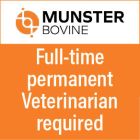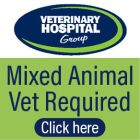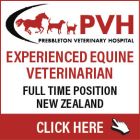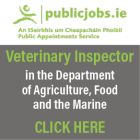What is that coughing calf telling you?
When faced with the problem of pneumonia in a group of animals, data collection and observation are essential in gaining a good understanding of what is going on, writes UK-based vet, Dr Tim Potter BVetMed PhD MRCVS
Pneumonia represents an economically damaging problem for anyone raising calves; losses are seen both at the time of an outbreak with the direct costs of dead animals, labour involved with the treatment, veterinary involvement and medicines. The long-term impact can be as equally damaging. The fibrosis and loss of functional lung capacity in animals that recover from pneumonia has a negative impact on daily live-weight gains. For the beef producer, this means a longer finishing time, while for those rearing dairy replacements, this means an increase in the age at first calving and the subsequent negative effects this has on production and reproductive performance. Estimation of the costs of outbreaks of bovine respiratory disease (BRD) varies between £43 and £84 per affected calf, with costs rising to £104 per affected animal when retreatments are required.
Each individual farm is unique in its infectious-disease risks, farm-management practices and environment; consequently, there is no ‘one-size-fits-all’ plan that can be implemented on every farm you visit.
Background information
You may be dealing with a farm for the first time, or this may be a client who you have worked closely with for a number of years; in either situation, it is important to get a good understanding of what actually happens on the farm.
Understanding the enterprise is important: are calves being born and raised on the farm, or are they being bought in? If they are being bought in, where are they coming from and at what age? What are the current management practices? Discuss, with the client, their current approach to all aspects of their calf rearing:
- Current housing, feeding and watering regimes;
- If appropriate, what is the current colostrum management on the farm;
- Vaccinations – products used and at what times?
- Treatment protocols – treatment used and in what doses? (be specific regarding dose rates; it is alarming how frequently animals are under-dosed!); and
- Farmer perception of disease problems.
The quality and quantity of disease records will vary from farm to farm. Some units will have detailed management notes for their calves, while for others the information will be patchy at best. It is useful to try and get some form of mortality and morbidity information for a minimum of three months to help put the disease in context; is what is being observed a new problem or has there been on going issue for a long time? If records are poor, there are a few things you can look at to at least give you part of the picture:
- Medicines sales and/or prescriptions
The farm assurance requirements of annual medicines reviews provide a great opportunity to engage with clients on what is happening on their farms and any disease issues.
- Look at all births or arrivals for the last three months
What has happened to these animals? By accounting for this cohort of animals you may be able to get a limited picture of morbidity and mortality on the farm.
On-farm investigation
Once you have collected background information it is important to have a look around the farm and observe the routine management practices. While doing this, always refer to the information you collected as part of the background information. Is what is supposed to happen actually occuring on a day-to-day basis?
Always have a look at the medicines cabinet and drugs fridge; does what you find fit with the treatments protocols described to you? Are medicines and vaccines stored appropriately?
Failure of passive transfer from colostrum has a major impact on the incidence and severity of calf respiratory disease. When examining a problem with a group of calves, you should always make enquiries about colostrum management. In units that buy in calves from market, this will be an unknown and little can be done to investigate further; while in units that are rearing their own calves, colostrum management can be investigated fully by examining farm practices and checking for failure of passive transfer in their young stock. Zinc sulphate turbidity tests or total protein measurement of calves in the first week of life provide a quantitative measure of passive transfer and can identify deficiencies in a farm’s management of colostrum feeding. The measurement of total solid content of serum by refractometer can be rapidly performed in practice and is a relatively inexpensive means of screening animals in a group situation. Using a cut off of >55g/L is indicative of sufficient passive transfer with a sensitivity of 0.94.
Housing and the environment are important factors in calf pneumonia, but always look at them in the context of the disease patterns you are seeing. It is very easy to recommend potentially expensive changes to buildings, but if other management or pathogen factors are more of an issue, any changes made can be of limited value.
While looking around the farm make note of the availability and quality of liquid and solid food, as well as water Youshould also observe housing comfort, depth/dryness/type of bedding and the management of waste.
Calf examinations
Always examine affected animals to establish the case rate. In outbreaks affecting very small numbers of animals, it may be possible to perform full clinical examinations on all animals; however, in larger groups a more targeted approach may be required. Assessment should be made of parameters that are clinically relevant to the disease problem, and ideally should include ones that are specific to the disease process. Depression and anorexia, although frequently present in disease outbreaks, identify the presence of a disease but tell you little of the cause. Pyrexia can be used to stage disease and is frequently used on an individual basis to drive treatment decisions; however, it is not disease specific. When examining a group problem, it is useful to make use of composite scoring systems which allow interpretation of a number of potential clinical presentations and the spectrum of disease seen across the whole group. Scoring schemes such as the one developed at the University of Wisconsin, examine a number of potential parameters and use a scoring system to aid interpretation. Animals scoring 4 are designated as animals to watch while those scoring 5 or more should receive treatment. As well as being used in disease investigations, this type of scoring system can be used to aid disease management on farm and as a means of regularly assessing the level of endemic disease. Having identified the most affected management group and established the level of disease, work backwards, looking at progressively younger animals to determine the onset of disease and work forwards looking at older animals to examine treatment efficacy.
Diagnostic testing
Many different pathogens have been implicated in both acute and chronic calf pneumonia. Mixed infections are frequently present in diseased calves and potential causative agents can often be isolated from apparently healthy animals. To this end, diagnostic test selection needs to be appropriate to both to the disease being looked for and the animal being examined. Always aim to sample animals that are both representative of the group affected and have exhibited representative symptoms. For most outbreaks, polymerase chain reaction (PCR) on deep nasopharyngeal swabs is a good starting point. In severe outbreaks where there are mortalities, post-mortem examination can provide valuable diagnostic material, and visual inspection can give an idea of the potential pathogen involved. They are also a great way of educating farm staff.
Treatment
Given the large number of pathogens that have been implicated in calf pneumonia, treatment tends to be symptomatic with a broad spectrum of effect.
Antimicrobials are the main component of most treatment regimes, and there is a wide selection of products at the vet’s disposal. The most important determinant of antimicrobial efficacy in treating pneumonia is rapidly attaining and maintaining an effective antimicrobial concentration at the site of infection, although remember the biggest challenge for this can often be identification of the affected animal and administration of the treatment.
Most cases of pneumonia are now treated with long-acting formulations; these products offer a prolonged period of action and are favoured because of the reduced requirement for repeated handling of the animals. Producers should be careful not to just ‘treat and forget’ the animals and should be encouraged to pay attention to supportive therapy for affected animals and be sure to identify animals in which treatment is ineffective. In the case of potential treatment failures the antimicrobial should be changed no earlier than 48 hours after the initial start of treatment (and potentially longer for some products) to ensure the drug has adequate time to take effect.
The use of anti-inflammatory agents in conjunction with antimicrobials is recommended and the advent of combination products makes this extremely easy. The goals of anti-inflammatory therapy are to reduce fever, block specific parts of the inflammatory cascade and to counteract endotoxins released by gram-negative organisms. The antipyretic effects of anti-inflammatory therapy result in improvements in attitude and appetite, the only disadvantage of which is the preclusion of the assessment of the effects of specific antimicrobials by temperature alone.
The next step – prevention
Once you have evaluated all available data on farm management and the disease process, you should rank identified risk factors for disease in order of importance and use this list as a basis to make farm specific recommendations. When making recommendations, always tailor them to the farm you are dealing with and remember to take into account the cost (both financial and in terms of time) of implementation. Once recommendations have been made always follow up with the farmer to check how the problem is progressing, this will allow you to re-evaluate the problem and make further changes as necessary.
In combination with improvements in management practices, vaccination programmes make up a key component of pneumonia control programmes on farm. Vaccines are now available which will provide effective control of the most common bacterial and viral causes of calf pneumonia and should be used prior to high risk periods to minimise the risk of disease. Vaccination programmes should be designed to take into the circumstances on individual farms and should be based around knowledge of the risk factors and the circulating pathogens.
Author
Tim Potter is senior clinical director at Westpoint Farm Vets, based in the UK, and presented on this topic at the 2019 London Vet Show. Dr Potter kindly granted permission for the Veterinary Ireland Journal to reprint this article.








